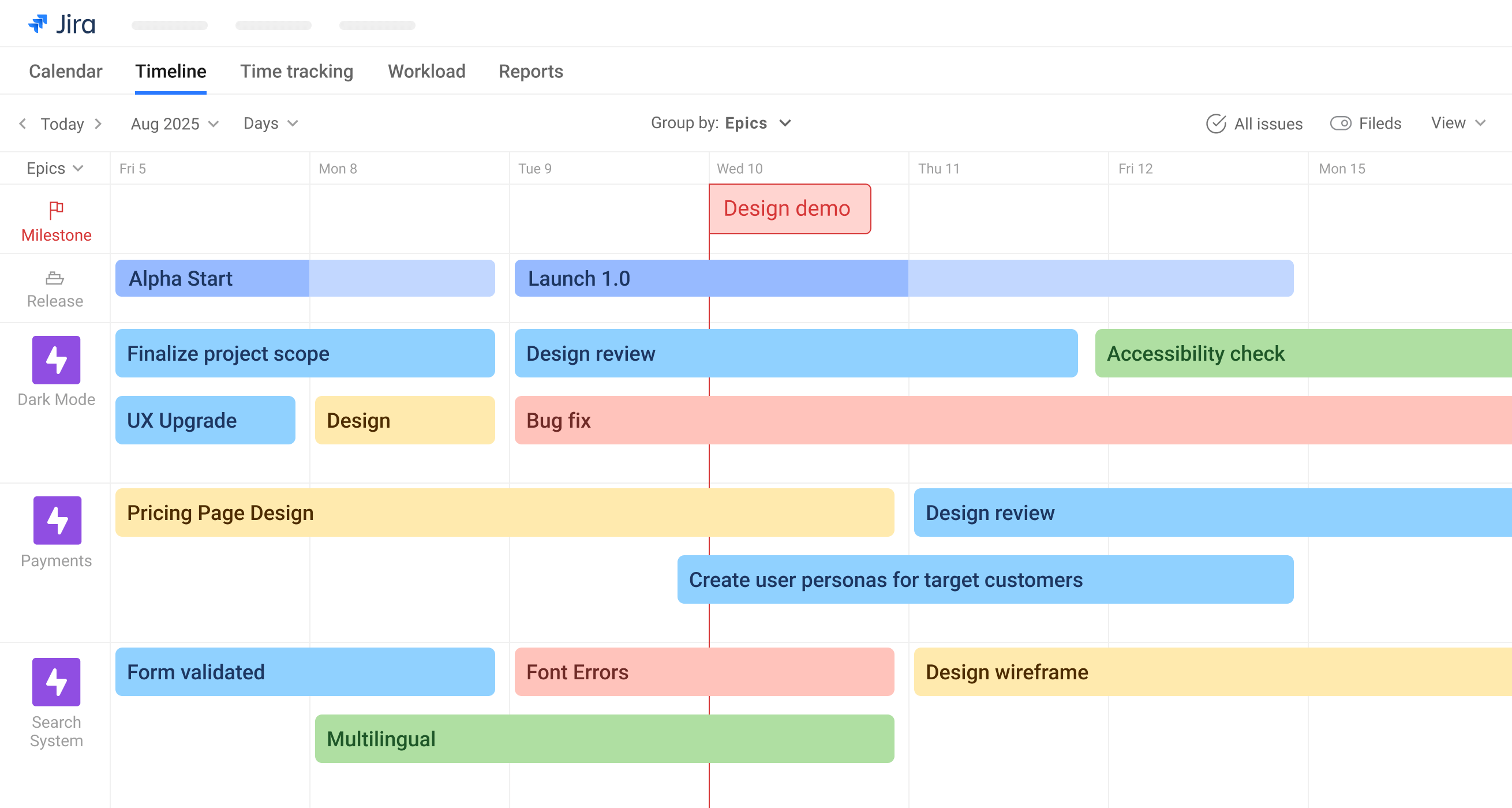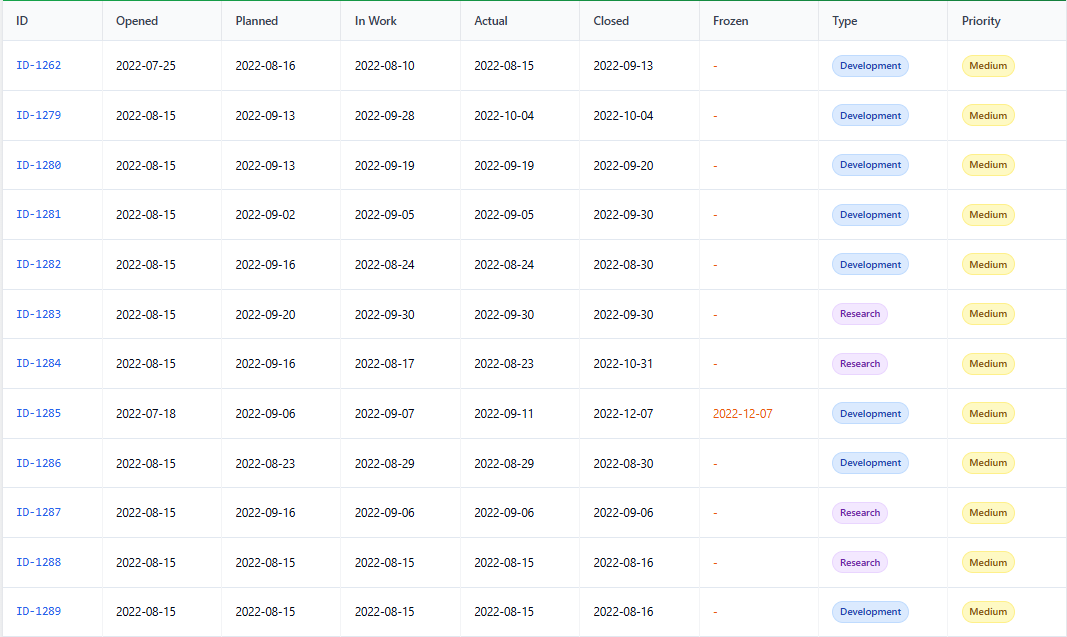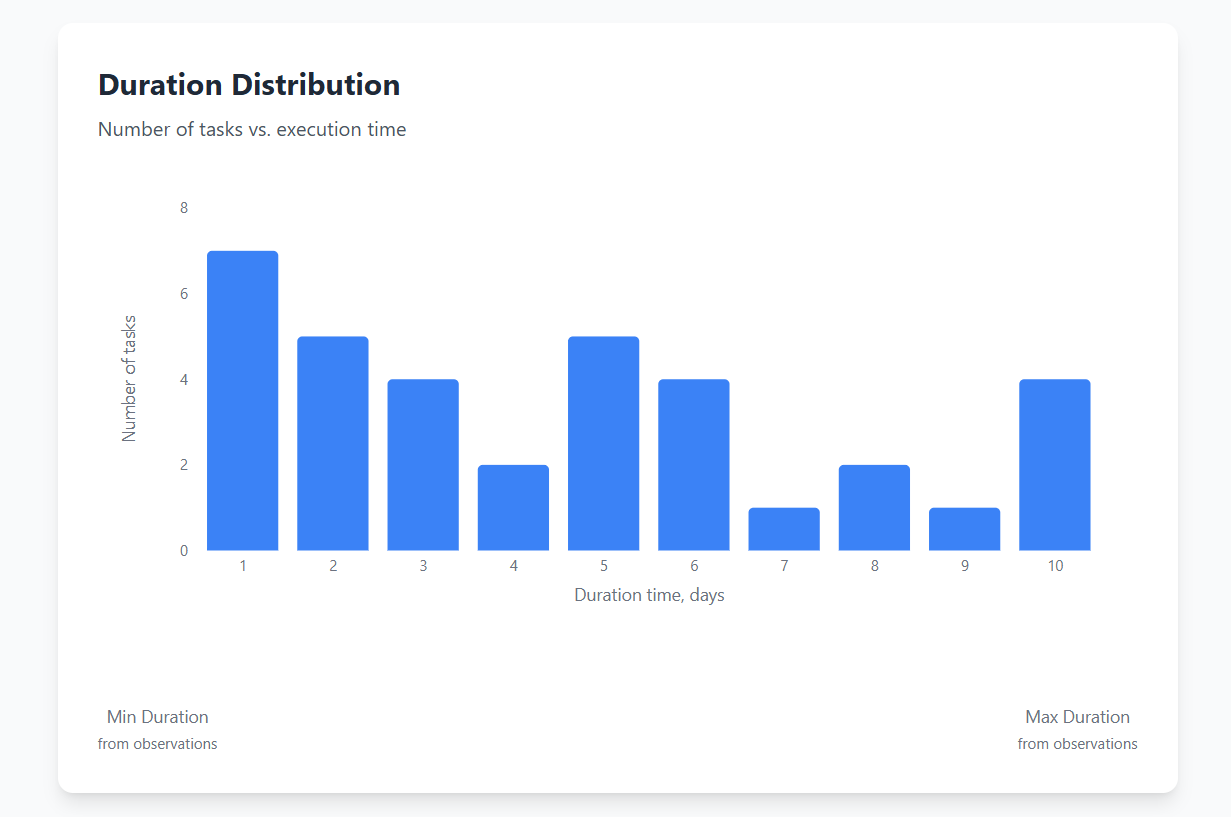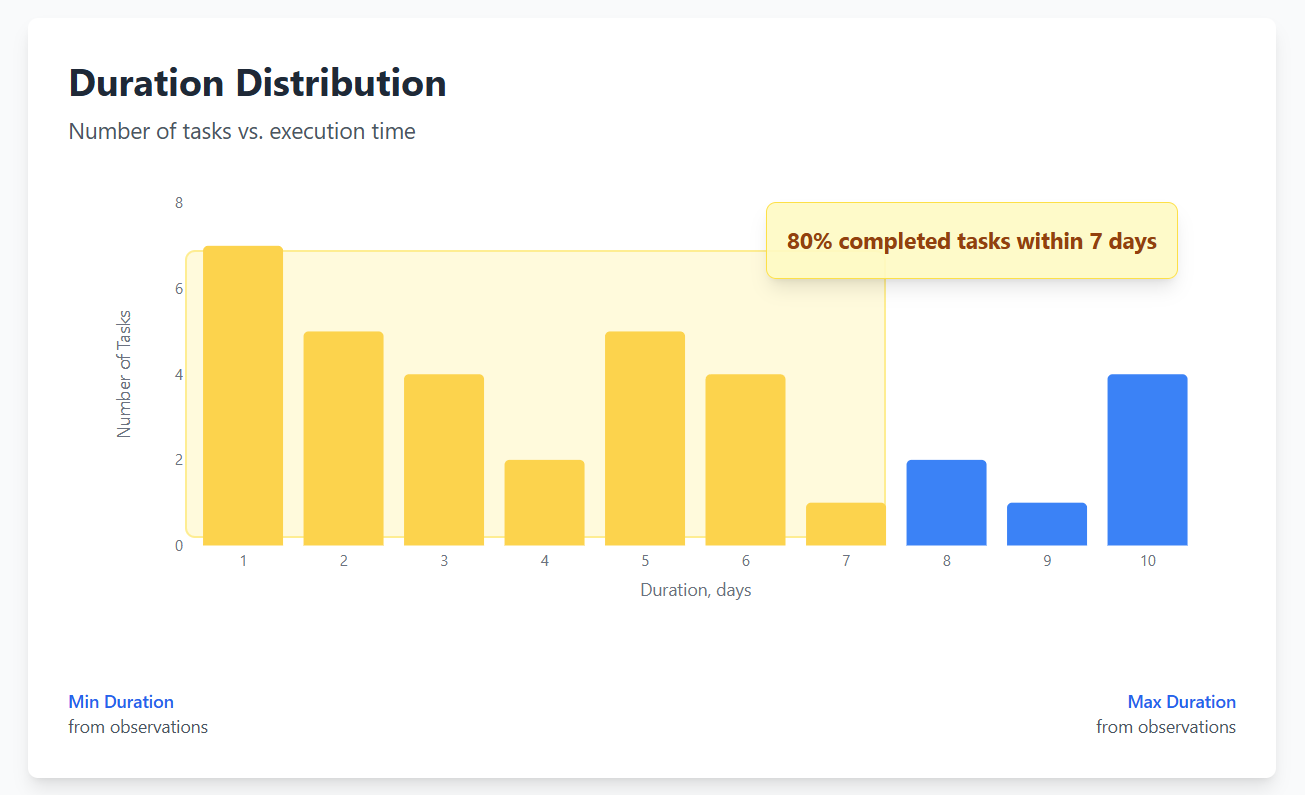Community resources
Community resources
Community resources
Jira-powered deadline estimations: achieving 80% accuracy with historical forecasting
A missed deadline can derail an entire project, and even the most seasoned teams can find accurate time estimation a significant challenge. However, what if you could forecast deadlines with 80% accuracy? This guide will show you how to transform your Jira data into a powerful forecasting engine.
Step 1: Tap into your Jira project's historical data
Your Jira instance is a goldmine of historical data. Instead of relying on guesswork, you can use this data to build a solid foundation for your forecasts.
How to do it in Jira:
- Utilize Jira Query Language (JQL): create filters to pull completed issues from past sprints or a specific period. For example, a simple JQL query like project = "YourProject" AND status = "Done" AND resolution = "Done" AND resolved >= -30d will give you all the issues completed in the last 30 days. Then, use Jira export. Here is more about it.
- Leverage marketplace apps: many apps on the Atlassian Marketplace can help you easily extract and analyze historical data, providing more advanced insights than Jira's native capabilities. Export in Excel is basic in many app including Planyway.
Step 2: Calculate task duration and visualize data
Once you have your set of completed issues, the next step is to understand how long each task actually took. In Jira, this is often referred to as "Cycle Time" or "Lead Time."
How to do it in Jira:
- Lead time report: Jira provides several ways to generate lead time reports, primarily using the Control Chart and the Time in Status add-on. The Control Chart visualizes the time it takes for issues to move from start to resolution, while the Time in Status add-on allows for more granular analysis by status groups.
- Exported data: if the options above are no use for you, you can always proceed with Excel’s DAYS() function.
Step 3: Apply probabilistic forecasting in Jira
This is where you can truly level up your estimation accuracy. Instead of a single-point estimate, probability theory approach allows you to state your confidence in your forecast.
How to do it in Jira:
- Monte Carlo simulation apps: several powerful apps for Jira, such as ActionableAgile, can run Monte Carlo simulations directly on your Jira data. to forecast the likelihood of completing a certain number of issues by a specific date.
- Interpreting the results: The output is typically a probabilistic forecast like, "There is an 85% chance of completing the remaining 50 issues by July 31st". This is a much more powerful and defensible statement than a single date estimate. Some experienced Jira users suggest that an 80% confidence level is optimistic, and a 60-70% range might be more realistic, depending on the project's complexity.
Step 4: Predict project deadlines and manage work in progress (WIP)
By combining your historical data analysis with an understanding of your team's capacity, you can predict overall project timelines with greater confidence. A key metric here is the Work-in-Progress (WIP) limit.
How to do it in Jira:
- Set WIP limits on your Kanban board: directly on your Jira Kanban board, you can configure WIP limits for each column. This prevents your team from being overloaded and helps to surface bottlenecks in your workflow.
- Timeline and roadmap views: Jira's timeline and roadmap views, especially the ones you get in Planyway for Jira can help you visualize your project's progress and dependencies. When combined with the probabilistic forecasts from Monte Carlo simulations, these views become powerful tools for long-term planning and stakeholder communication.

- Continuous forecasting: the beauty of this approach is that it runs in parallel with your project. As your team completes more work in Jira, your historical data grows, and your forecasts can be continuously updated and refined. This agile approach to estimation ensures you always have the most accurate and up-to-date information at your fingertips.
By embedding these data-driven estimation techniques directly into your Jira workflow, you can move away from stressful, high-pressure guessing games and toward a more transparent and accurate method of forecasting deadlines. This not only improves your ability to deliver projects on time but also fosters a more predictable and sustainable work environment for your team.
Was this helpful?
Thanks!
Mary from Planyway
About this author
Customer Support Manager at Planyway
Planyway
Kazakhstan
64 accepted answers



0 comments